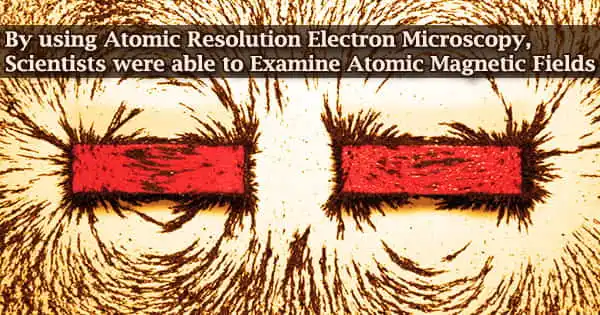For the first time in the world, a combined development team led by Professor Shibata (University of Tokyo), JEOL Ltd., and Monash University succeeded in directly seeing an atomic magnetic field, the source of magnets (magnetic force).
The experiment was carried out with the newly created Magnetic-field-free atomic-resolution STEM system (MARS). For the first time in 2012, this team could observe the electric field inside atoms.
However, because magnetic fields in atoms are exceedingly weak compared to electric fields, the technology to see magnetic fields has remained undeveloped since the invention of electron microscopes.
This is a game-changing achievement that will change the course of microscope development forever. Electron microscopes have the highest spatial resolution of all the microscopes now in use.
However, we must see the sample by placing it in an incredibly strong lens magnetic field in order to get ultra-high resolution and directly observe atoms. As a result, atomic observation of magnetic materials such as magnets and steels, which are substantially impacted by the lens magnetic field, has been difficult for many years.

In 2019, the team succeeded in inventing a lens with an entirely new structure for this demanding task. The team achieved atomic observation of magnetic materials using this novel lens, which is unaffected by the lens magnetic field.
The team’s next goal was to see the magnetic fields of atoms, which are the source of magnets (magnetic force), and they continued to build technology to do this.
This time, the combined development team took on the task of monitoring the magnetic fields of iron (Fe) atoms in a hematite crystal (α-Fe2O3) utilizing MARS and a newly constructed high-sensitivity high-speed detector, as well as computer picture processing.
They employed Professor Shibata et alDifferential .’s Phase Contrast (DPC) approach at atomic resolution to monitor the magnetic fields. DPC is an ultrahigh-resolution local electromagnetic field measurement method employing a scanning transmission electron microscope (STEM).
The findings proved that iron atoms are tiny magnets in and of themselves (atomic magnet). The findings also provide light on the genesis of hematite’s atomic-level magnetism (antiferromagnetism).
The observation of an atomic magnetic field was shown, and a method for observing atomic magnetic fields was devised, based on the findings of this study. Magnets, steels, magnetic devices, magnetic memory, magnetic semiconductors, spintronics, and topological materials are all likely to benefit from this technology in the future.
This research was conducted by the joint development team of Professor Naoya Shibata (Director of the Institute of Engineering Innovation, School of Engineering, the University of Tokyo) and Dr. Yuji Kohno et al. (Specialists of JEOL Ltd.) in collaboration with Monash University, Australia, under the Advanced Measurement and Analysis Systems Development (SENTAN), Japan Science and Technology Agency (JST).
Terms:
Magnetic-field-free Atomic-Resolution STEM (MARS) –
An electron microscope is a device that uses an electron beam to directly see the microstructure of a sample. The electron beams transmitted and dispersed by the sample are magnified using a magnetic field lens.
An electron microscope can currently be used to see atoms directly. Due to the light source (visible light), the spatial resolution of an optical microscope is theoretically restricted to around one micrometer.
The spatial resolution limit of an electron microscope, on the other hand, is transcended by leveraging the wave nature of electrons. As a result, an electron microscope can be defined as an observation tool that directly employs the benefits of quantum mechanics.
The Magnetic-field-free Atomic-Resolution STEM (MARS) is an electron microscope developed by the current joint development team in 2019 that can measure a sample without using a magnetic field.
Differential Phase Contrast (DPC) method –
The measurement of the electromagnetic field at each point in a sample using this method. When an electron beam is injected into a sample, the electromagnetic field that exists within the sample causes a slight trajectory change in the electron beam incident, and the electromagnetic field can be measured by measuring the difference in the electron beam intensity detected in each position of a split detector.
Because the size of the electron probe determines the spatial resolution of this technology, observation of an electromagnetic field at atomic resolution is theoretically achievable using the DPC method.
Scanning Transmission Electron Microscope (STEM) –
An equipment that allows you to see the structure of a sample up close. A micro-focused electron beam is scanned on the sample, and the intensity of electrons transmitted and scattered by the sample is measured for observation. Currently, we can use a STEM to examine atoms directly.
Antiferromagnetism –
A type of magnetism in which nearby atoms’ spins are aligned with each other facing antiparallel and the material as a whole lacks spontaneous magnetization.





